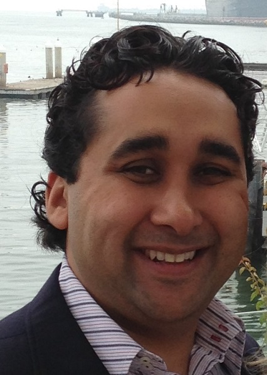Head of Rochester Property Group Watches Great Lakes Manufactured Housing Communities from Afar

Jason Janda works in L.A., and spends his day thinking about manufactured housing communities in Great Lakes states and to the east.
An attorney in tax law for a private equity firm, he purchased apartment buildings on the side. In 2014, Janda was drawn to manufactured home communities. He enrolled to the Mobile Home University boot camp, run by Dave Reynolds and Frank Rolfe, and read everything he could find on the subject.
In 2016, he took the leap and made the purchase of his first park.
Re-imagine What You Know
“You really have to educate the investor and break those false impressions that are created by TV and our culture in general, and make sure the first investment goes really well,” Janda said, looking back on the deals he might have signed if hadn’t initially been so risk averse. “I couldn’t afford to have anything go wrong, otherwise my investors would question the whole direction, the whole industry.”
The investors he’s attracted are high earning professionals who aren’t distracted by the details, they just want to know they’re getting 10 percent return on investment.
Janda purchased from a gentleman who had operated a Wisconsin park for 35 years and ran into some health problems. The owner sold so his wife would get a regular check if something were to happen, Janda said.
He bought the “Ma and Pop” community south of Lake Winnebago, a small park that could be fixed up, But it was hardly the 200-plus site “Cash Cow” larger investors have targeted.
With it, he has an adapted strategy that suits him well.
“It’s still a good niche to be in, and will stay pretty good for the near to middle term,” Janda said. “If I was looking to buy something at a 5 cap, I’d be doing something off market in apartments still. I’m here because I want an 8 cap, and that’s still happening in the Midwest.”
An Effective Strategy
“Let’s say you try to buy 300 sites all together in a single metro area, you’re paying a lower Cap. You could also buy 50 sites at six different places all within two hours of each other.”
There’s a regional manager and a maintenance supervisor who can drive to a community within a couple hours. That person can put in four hours on site and drive home by the end of the workday.
“You need to have these employees getting to every community at very least once per month, and then you also have a site manager who’s there every day,” Janda said. “Without the technology we have today, this couldn’t be done. So, if you’ve been in the business for decades, you’re not compelled to work this way. But if we’re picking up communities, we can implement this way of working that happens remotely almost instantly.”
Janda works without a broker, checks mil rates for tax purposes, and makes his own net operating income estimates. A community priced higher than his budget is justifiable if the place is in reasonable physical condition. This is particularly true if the park has some improvements to be made in operations.
His intention is to add as many as 200 sites in his portfolio of manufactured housing communities by 2018.
“An adequate goal for us would be at least two park purchases every year for the next 10 years,” Janda said. “And maybe it’s three or four per year in those later years.
“The manufactured home industry is in itself a community,” he said. “People are generally helpful. It’s more open than many places you might invest.”









